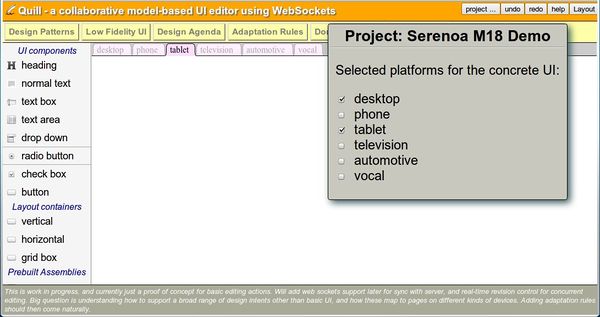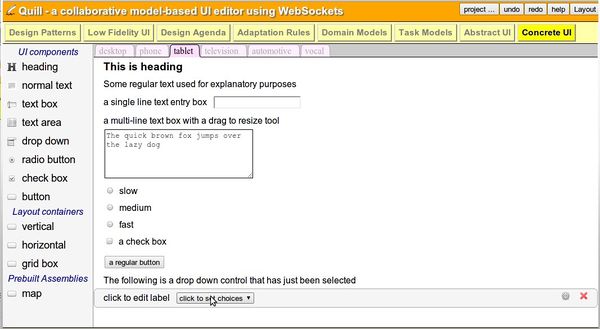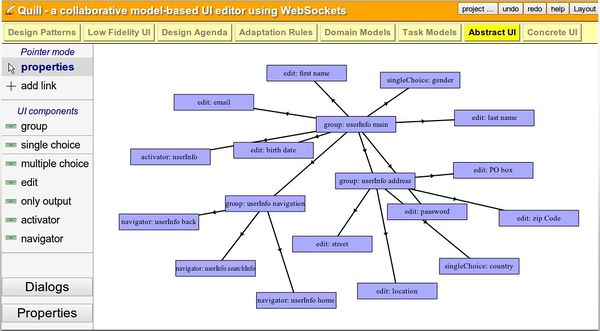Warning:
This wiki has been archived and is now read-only.
Serenoa Authoring tools
Authoring tools help designers, engineers and web authors to easily create context-sensitive user interfaces for different platforms and different interaction modalities, e.g. visual, aural and tactile. The authoring tools will be usable by non-expert programmers, and fulfil some additional key success factors, including the usability of the graphical interface, the availability on multiple platforms and the support for concurrent work by multiple users (business experts, user interface designers and programmers working as a team) appear as very important requirements. The authoring tools will support editing of model-based descriptions at both abstract and concrete levels, together with context-dependent transformation rules. Two types of authoring tools are being developed as proof of concept for the Serenoa architecture:
- Eclipse-based Plug-in: this type is a 'plug-in' for Eclipse, one of the most widely used Integrated Development Environments (IDEs) in the research and industrial communities for software development. Since most of the open source and research based authoring environments/tools, i.e. MARIA and LEONARDI and other related libraries are developed in Java, we have also chosen the Java programming language for Serenoa's authoring environment and tools.
- HTML5-based Browser Application: the second type being developed is an HTML5-based web browser application that operates on the models that are held on the web server side. This approach allows live concurrent editing by multiple users, so that they could see and discuss the changes which a remote user is making in real time. A server-based design-time adaptation engine allows designers to work at different levels of abstraction, synchronising changes in a cooperative workflow.
Thus, Model-Based languages, i.e. MARIA, UsiXML, and IDEAL2 have been used as basis for not only developing the abstract UI and adaptation logic languages, but also the generation of Abstract/Concrete UIs. The following figures show the outcome of both types of authoring tools; the first version of plug-in for rules editing (Figure ) and the collaborative Model-Based UI editor prototype, named Quill (Figure ).

Quill showing device classes for project


